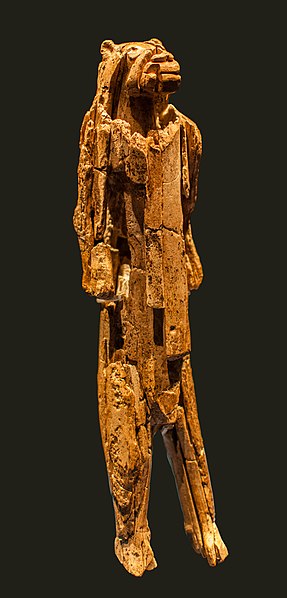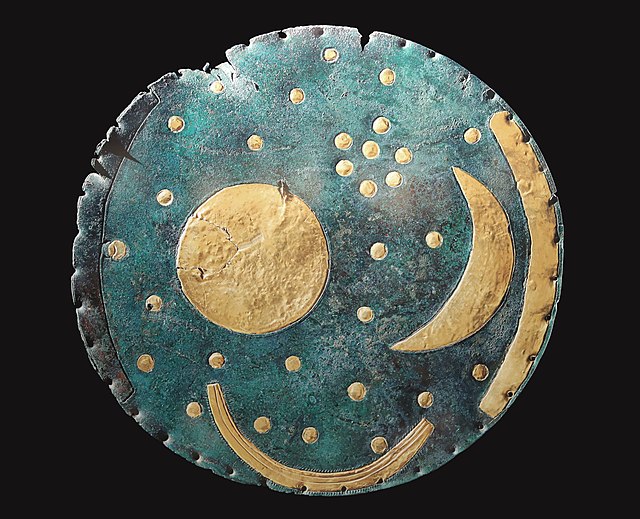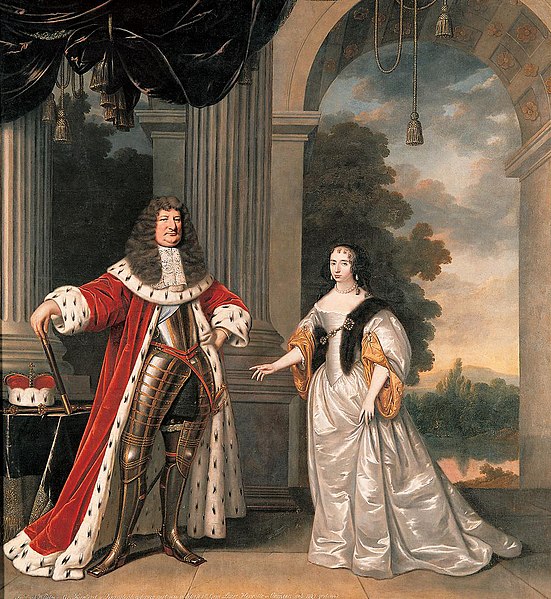The concept of Germany as a distinct region in Central Europe can be traced to Julius Caesar, who referred to the unconquered area east of the Rhine as Germania, thus distinguishing it from Gaul. The victory of the Germanic tribes in the Battle of the Teutoburg Forest prevented annexation by the Roman Empire, although the Roman provinces of Germania Superior and Germania Inferior were established along the Rhine. Following the Fall of the Western Roman Empire, the Franks conquered the other West Germanic tribes. When the Frankish Empire was divided among Charles the Great's heirs in 843, the eastern part became East Francia. In 962, Otto I became the first Holy Roman Emperor of the Holy Roman Empire, the medieval German state.
The Lion-Man of Hohlenstein-Stadel, 41.000 BP
Bone flute from Geißenklösterle. Aurignacian culture, 43,000–35,000 BC
Stroke-ornamented ware culture settlement with long houses and circular enclosures, c. 4700 BC
The Nebra sky disc, Unetice culture, c. 1800–1600 BC
Prussia was a German state located on most of the North European Plain, also occupying southern and eastern regions. It formed the German Empire when it united the German states in 1871. It was de facto dissolved by an emergency decree transferring powers of the Prussian government to German Chancellor Franz von Papen in 1932 and de jure by an Allied decree in 1947. For centuries, the House of Hohenzollern ruled Prussia, expanding its size with the Prussian Army. Prussia, with its capital at Königsberg and then, when it became the Kingdom of Prussia in 1701, Berlin, decisively shaped the history of Germany.
Situation after the conquest in the late 13th century. Areas in purple under control of the Monastic State of the Teutonic Knights.
Prussian Homage by Jan Matejko. After admitting the dependence of Prussia to the Polish Crown, Albert of Prussia receives Ducal Prussia as a fief from King Sigismund I the Old of Poland in 1525.
The "Great Elector" and his wife
Frederick I, King in Prussia








